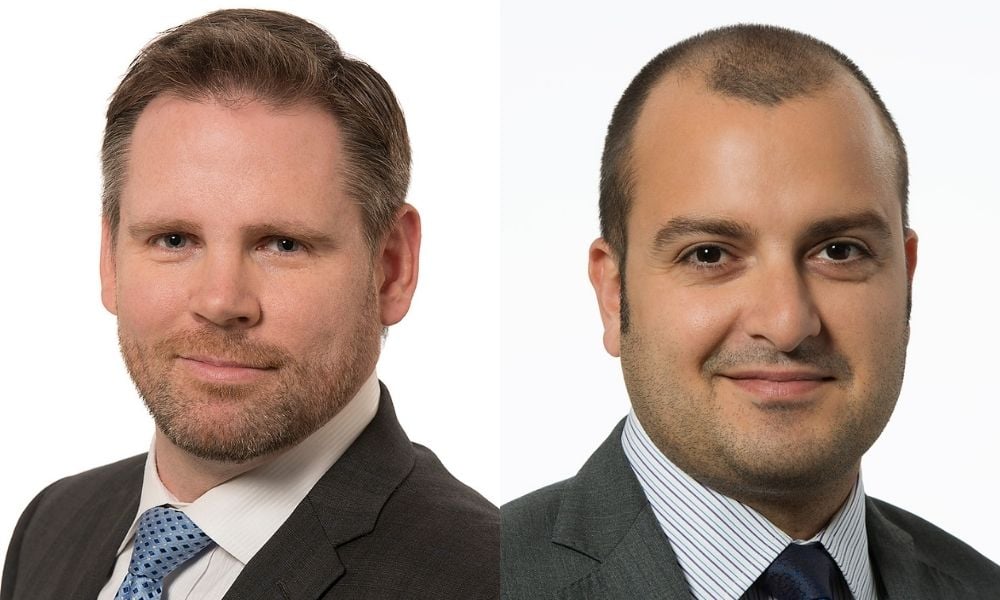Newly promoted pair talk to WP about inflationary pressures, rate hikes, and other issues that should be on advisors’ radars

Manulife Investment Management (MIM) unveiled its new co-chief investment strategist pairing yesterday amid a backdrop of persistent inflation and uncertainty over interest rates.
In a week where investors will tune into the Bank of Canada’s policy update, desperately seeking any clues as to when it might start hiking rates, Manulife announced the promotion of Kevin Headland and Macan Nia to replace Philip Petursson, who recently left to join IG Wealth Management.
Headland and Nia spoke to Wealth Professional about the issues investors should be monitoring in Q4 and into 2022, and Nia said enduring, not transitory, inflation was something MIM’s team has been talking about since the beginning of the year. Specifically, he believes advisors must be conscious of what this, and the prospect of rising rates, means to their fixed-income allocation.
He said: “When we look at the year to date, the majority of typical fixed income is negative, and that will have implications for clients and their ability to meet retirement goals because fixed income has traditionally not provided negative returns.”
Given the current environment, the chances of a central bank policy mistake is heightened. But Manulife’s view remains that we will likely see the beginning of interest rate increases in Canada next year. Both Nia and Headland stressed the need to keep in perspective that we are coming from record-low levels and that, as always, it’s vital to set expectations with clients.
Headland explained: “Both central banks, here in Canada and in the U.S., will be very cautious and very transparent because the last thing they want to do is create additional volatility when we're starting to get our feet underneath us in terms of economic growth and stabilization.
“We shouldn't be surprised that the bank is going to start to raise rates at some point - that's normal in this phase of the recovery. Central banks need to increase interest rates to some ‘normal level’ in order to offer some cushion to reduce them should we get a recession. At the same time, I don't think they're going to be rushing to raise rates too quickly if the market is not ready for that.”
Headland also highlighted oil prices, up 50% year to date, as another issue advisors should be wary of and as an additional inflationary pressure that could result in an economic shock. It’s important, therefore, to understand whether the associated risks are long lasting or more short term, which you can take advantage of.
Next year has a plethora of potential themes awaiting investors. From the aforementioned inflation and price of oil to the debt-ceiling debate in the US, COVID, and the U.S. midterms. Nia added that, historically, this point in the cycle - the normalization phase - results in an increase in volatility. Advisors should, therefore, expect to do more hand-holding with clients to navigate this choppiness.
He said: “Our job is to provide better information to the advisor that will lead to better outcomes. The quote I love, and which may become a theme next year is, ‘investing is like soap, the more you touch it the smaller it gets’. There are changes to be made within asset allocation but the knee-jerk reaction, when markets sell off, of getting out and then trying to get back in, is [one to avoid].”
Both strategists are excited to sink their teeth into the new roles, describing it as humbling and a great opportunity. Both believe in a generalist approach and with Headland also bilingual, they complement each other well. Both also believe the key to success for advisors in 2022 is in preparing clients for volatility and more modest returns.
Headland said: “Where we are in the stage of the post-recession recovery is what we've been characterizing as the normalization phase, where things are still good and fundamentals are very supportive of equity markets, but there's probably going to be a little more choppiness.
“It’s important for advisors to prepare their clients’ expectations and that means they are not expecting 20%-plus percent returns that they might have been used to. It’s about being more understanding of what our environment is and how to best prepare for it.”
Nia added: “The end-client experience is ultimately determined by expectations set by the advisor at the beginning of the year. And we've had two very great years in terms of returns. [2022] is still going to be positive and our forecast as of right now is of high single digits with risk to the upside but it's important for advisors to temper expectations of outsized returns because that ultimately helps the client in their experience with the market.”



